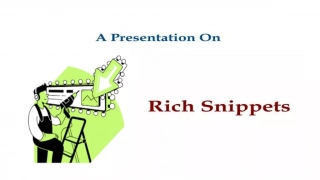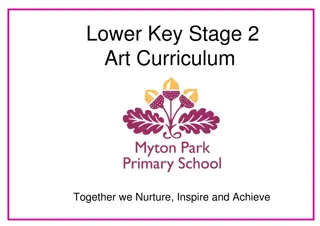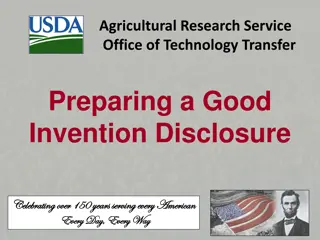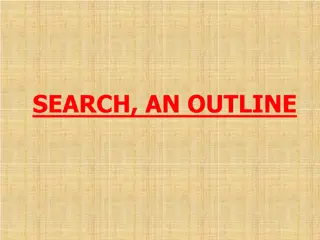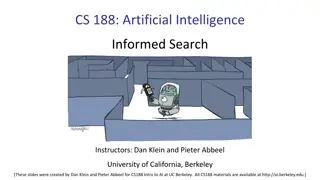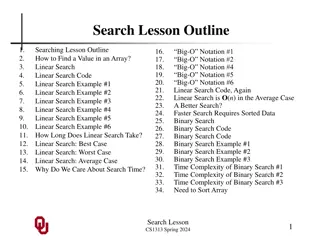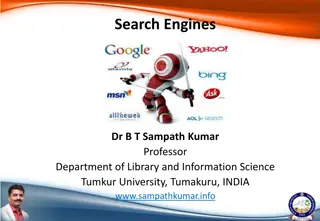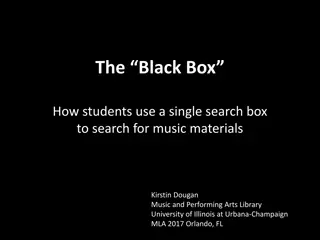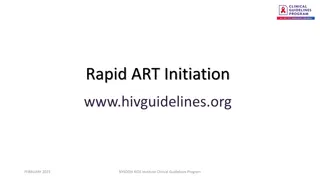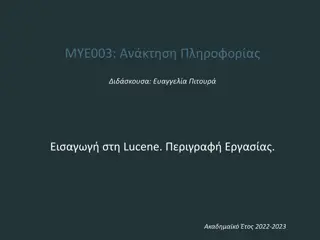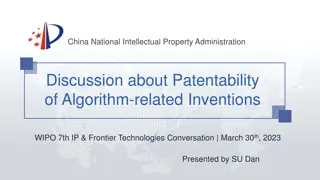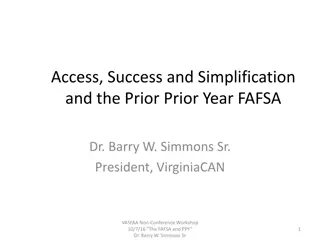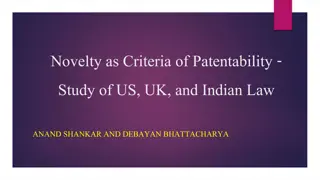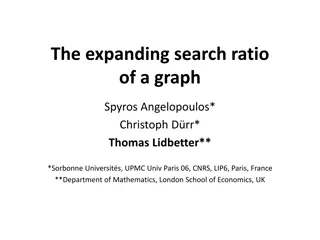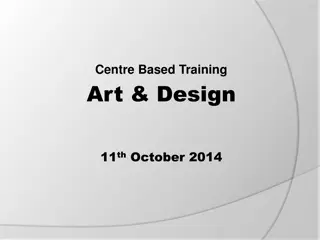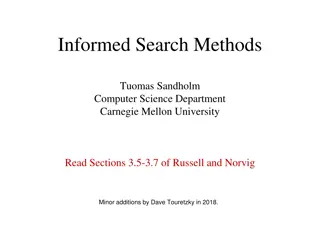Understanding Patentability Criteria and Prior Art Search
Explore the different types of patents, legal requirements for obtaining a patent, the importance of prior art search, types of inventions that can be patented, and the criteria for patentability. Learn about useful inventions, ornamental inventions, plant inventions, and the legal requirements such as novelty, non-obviousness, and utility eligibility. Discover the process patents, machine patents, and manufacture patents.
Download Presentation

Please find below an Image/Link to download the presentation.
The content on the website is provided AS IS for your information and personal use only. It may not be sold, licensed, or shared on other websites without obtaining consent from the author. Download presentation by click this link. If you encounter any issues during the download, it is possible that the publisher has removed the file from their server.
E N D
Presentation Transcript
Patentability Criteria and Prior Art Search Dr Nagender Aneja Universiti Brunei Darussalam
Contents Types of Patent Legal Requirements of Patent What is a Prior Art and how is it important? How to do Prior Art Search? Case Study
Can you patent an idea? What is the idea - Result - Idea is a machine, process, manufacture, or composition of matter
What are the types of inventions that can be patented? Useful inventions - protected by utility patents. Ornamental inventions - protected by design patents. Plant inventions - protected by plant patents.
Useful Inventions Process Machine Manufacture Compositions of matter Exceptions - An abstract idea - A natural phenomenon - A law of nature.
Ornamental Inventions Any type of surface ornamentation
Plant Inventions Any new and distinctive plants
Legal Requirements to get a Patent Is your Invention a Machine, Process, Manufacture, Composition of Matter Is your Invention Not-Obvious? Is your Invention Useful? Is your Invention New? Utility Eligibility Requirement Novelty Requirement Non-obviousness Requirement Requirement 1 2 3 4
Process patents A process is a series of steps, acts, or methods. - patent on the method of doing something. Different method claims can protect different aspects of the invention.
Machine patents A machine is an apparatus or a group of assembled components that achieves a result. - Examples: a computer, a car, and a desk.
Manufacture Material that is milled, cut, treated into a new form, quality, or property. - similar to a machine, and in some instances, the subject matters overlap. - distinction is that a manufacture is a single piece of material that is shaped, whereas a machine is assembled components. - Examples: screwdriver tip, screw or nut.
Composition of matter A composition of matter is a composition of two or more substances. - chemically or mechanically joined - Gasses, fluids, powders, or solids are forms of a composition of matter. - Examples: concrete, fiberglass, and ceramic.
Novelty Requirement: Is the invention novel? Relative Novelty - Inventor can disclose the invention to others before filing the patent application Absolute Novelty - Inventors are not allowed to disclose the invention before filing of the patent application
Nonobviousness requirement: Is the invention non-obvious? The invention must be non-obvious to get a patent. - it is not an obvious variant of the prior art To a person of ordinary skill in the art If a combination of old things requires a significant redesign, the combination is not obvious. If one of the references taught away from the combination of two references, then it is nonobvious.
What is a Prior Art? Published Content in any language anywhere before the filing date - whether inventor knows or not - It can invalidate your claims if available to public before priority date Novelty Search, Prior Art Search, Patentability Search, Patent Search Validity Search, Invalidity Search Freedom-to-Operate Search, Clearance Search
Does a patent search help? Determine if the invention is Novel and Non-obvious - Reduce the chance of extensive amendments after filing - Describe your invention as improvement over relevant prior art
What happens to a Patent Application after Examiner found a Prior Art Patent Application will be rejected by the Patent Office - However, the Patent Application Claims can be amended and can be re-submitted for further examination
How to conduct Prior Art Search Determine Point of Novelty Brainstorm keywords that describe the invention Determine top Applicants, Inventors in the area Search the Patents and Non-Patent Literature Do Forward and Backward Citation Search Save all results
Search Patent Google Patents USPTO Patent Search European Patent Search WIPO Patent Search Lens
Search Non-Patent Google, Bing Google Scholar IEEE Springer Elsevier Lens
Prior Art Search Report Invention Title Summary of the Invention Keywords List of Patent Literature - Title, Patent Number, and Related Text List of Non-Patent Literature - Title, URL, Related Text
Case Study Creating Video based on a Topic
Creating Video The invention discloses a method to extract video segment from a video based on a topic. A score is given to the video segment. A new video is created using the extracted videos based on the score.
Keywords and Top Assignees Video Segmentation, Video extraction, Video Making, Video Compiling, Machine Learning, video scoring Google, youtube, Facebook, vimeo, netflix, ..
Relevant Patent Literature US Content Based Video Segmentation - According to an embodiment, an assistive technique is provided that may reduce the effort required to select good video clip start and end points through automatic hierarchical segmentation of a video and an interface for quickly navigating this hierarchy while ultimately maintaining user control over the start and end points. A video segmentation algorithm uses a combination of audio and video features to determine the
Relevant Non-Patent Literature
GENERATING SYNTHESIS VIDEOS http://appft.uspto.gov/netacgi/nph- Parser?Sect1=PTO1&Sect2=HITOFF&d=PG01&p=1&u=%2Fnetahtml%2FPTO%2Fsrchnum.ht ml&r=1&f=G&l=50&s1=%2220190188479%22.PGNR.&OS=DN/20190188479&RS=DN/201901 88479


